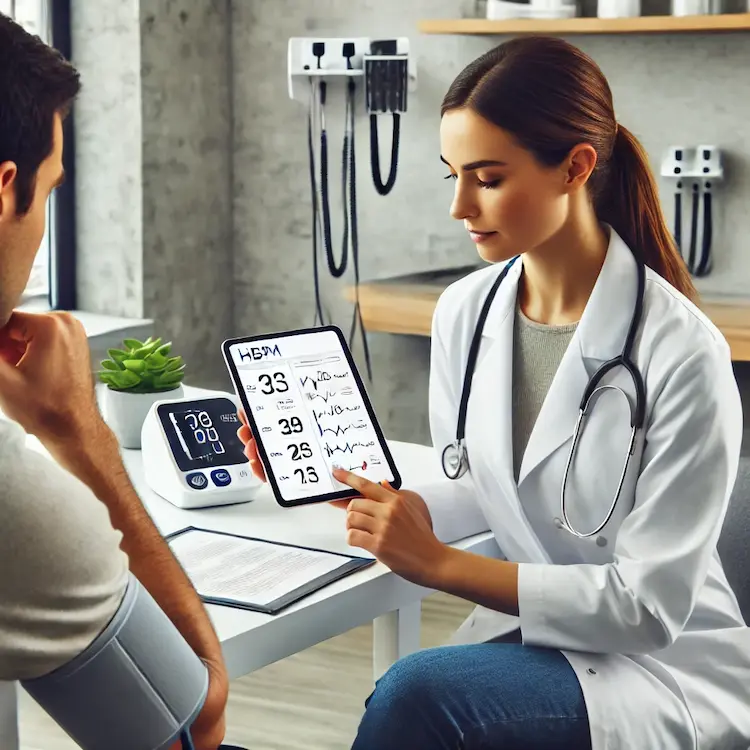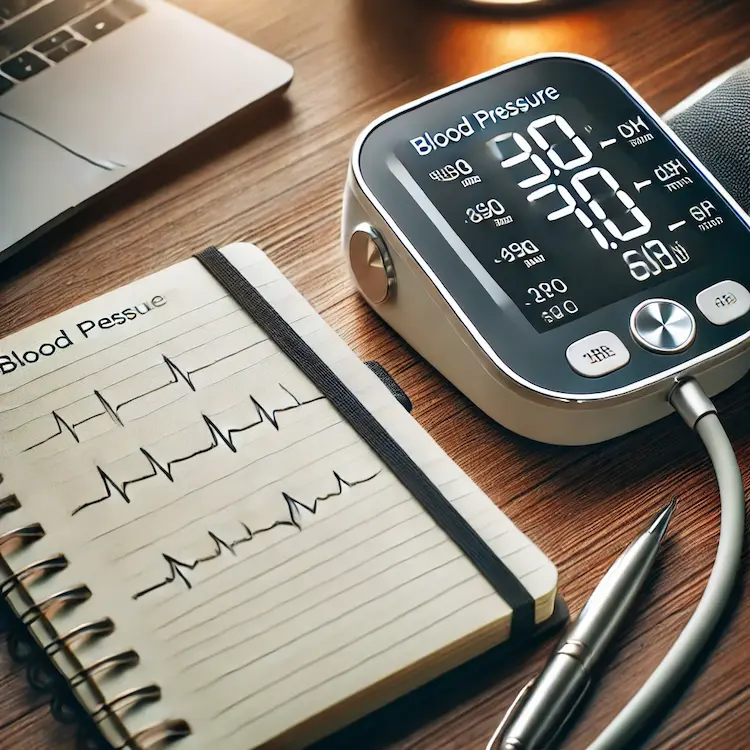Home Blood Pressure Monitoring (HBPM) is the practice of measuring your blood pressure outside a clinical setting, typically at home. This method empowers individuals to track their blood pressure consistently, offering valuable insights into cardiovascular health. Unlike occasional readings taken in a doctor’s office, HBPM provides a more comprehensive picture of blood pressure patterns, aiding in diagnosis, treatment, and prevention of hypertension-related complications.
Importance of HBPM
Early Detection of Hypertension
Hypertension often goes unnoticed until it causes severe health problems. HBPM helps in early detection by providing regular readings, reducing the chances of “white coat hypertension” (elevated readings in clinical settings) or “masked hypertension” (normal readings in clinics but high at home).
Better Management of Chronic Conditions
HBPM is instrumental for individuals managing conditions like diabetes, kidney disease, or cardiovascular disorders. Frequent monitoring ensures that medication and lifestyle interventions are effective.
Enhancing Patient Engagement
HBPM encourages active participation in health management. Patients can share data with healthcare providers, fostering informed discussions and personalized care plans.

Methods of Home Blood Pressure Monitoring
Manual Blood Pressure Monitors
- Description: These include a cuff, a stethoscope, and a manual inflation bulb.
- Pros: Reliable when used correctly.
- Cons: Requires training and practice for accurate readings.
Digital Blood Pressure Monitors
- Description: These automated devices inflate the cuff and display results digitally.
- Pros: Easy to use, widely available, and often includes features like memory storage.
- Cons: Accuracy can vary; regular calibration is needed.
Ambulatory Blood Pressure Monitors (ABPM)
- Description: Worn throughout the day, ABPM measures blood pressure at regular intervals.
- Pros: Provides 24-hour data, ideal for detecting nocturnal hypertension.
- Cons: Expensive and less comfortable for continuous use.
Practical Tips for Accurate HBPM
- Use a Validated Device: Ensure your monitor is approved by medical authorities.
- Follow Proper Technique:
- Sit upright with feet flat on the floor.
- Rest for 5 minutes before measuring.
- Position the cuff correctly on the upper arm.
- Record Measurements: Maintain a log to track trends.
- Avoid Triggers Before Measurement: Avoid caffeine, alcohol, and exercise 30 minutes prior.

Potential Health and Societal Impacts
Improved Public Health Outcomes
Widespread adoption of HBPM could significantly reduce the prevalence of hypertension-related illnesses like stroke and heart disease. According to the World Health Organization (WHO), hypertension is a leading cause of mortality worldwide, and early detection can save millions of lives.
Economic Benefits
HBPM reduces healthcare costs by minimizing the need for frequent doctor visits and hospitalizations for unmanaged hypertension.
Empowering Communities
Awareness campaigns and community-driven initiatives promoting HBPM can enhance public health literacy and encourage preventive care.
Comparisons of Monitoring Methods
| Feature | Manual Monitors | Digital Monitors | Ambulatory Monitors (ABPM) |
|---|---|---|---|
| Ease of Use | Low | High | Moderate |
| Accuracy | High (with training) | Variable | High |
| Cost | Affordable | Moderate | Expensive |
| Data Storage | None | Yes | Yes |
| Portability | Low | High | High |
Key Statistics
- Prevalence of Hypertension: According to the CDC, nearly 47% of adults in the U.S. have hypertension.
- Benefits of HBPM: A study published in The Lancet found that HBPM improved blood pressure control rates by up to 20%.
- Global Awareness: Only about 30% of hypertensive individuals globally regularly monitor their blood pressure.
Practical Advice
- Choose the Right Monitor: Look for devices with features like memory storage and large displays for ease of use.
- Monitor Regularly: Measure at the same time daily to track consistent trends.
- Partner with Healthcare Providers: Share readings to adjust treatments effectively.
- Educate Yourself: Learn about healthy blood pressure ranges and triggers for high readings.
Summary and Recommendations
Home Blood Pressure Monitoring (HBPM) is a vital tool for managing cardiovascular health. It provides accurate, real-time insights into blood pressure trends, empowering individuals to take control of their health. By choosing the right monitoring method, following proper techniques, and collaborating with healthcare providers, individuals can significantly reduce the risks associated with hypertension. Start monitoring today for a healthier tomorrow.


